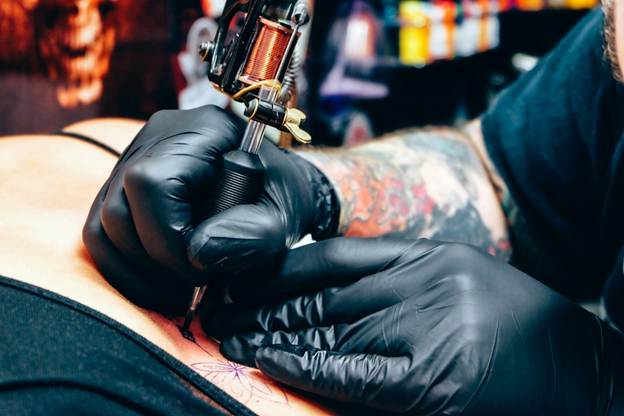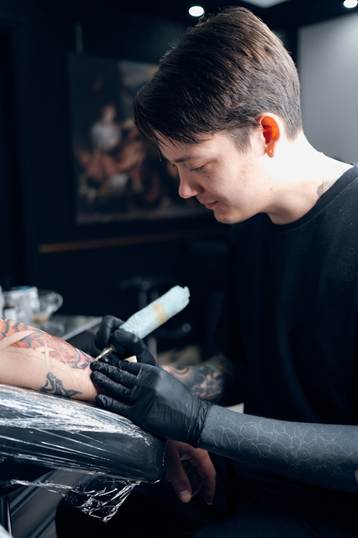
In the art of tattooing, every stage of the process shapes the final outcome. While factors like ink quality, needle choice, and an artist’s technical expertise often take center stage, one crucial step can determine a design’s success before a single drop of ink meets the skin - the tattoo transfer. Using a professional-grade tattoo stencil printer elevates this process, producing transfers that serve as precise, durable blueprints for the work ahead. A high-quality stencil is far more than a convenience; it’s the foundation that ensures accuracy, preserves design integrity, and guides every line with confidence.
The importance of the stencil and transfer process is undeniable. This step seamlessly connects an artist’s creative vision with flawless technical execution, ensuring every curve, line, and fine detail is placed with absolute precision.
High-quality transfers ensure that the design is accurately replicated from the original artwork to the skin. Inferior transfers can distort proportions, blur details, or fade too quickly during the tattooing process. This results in constant re-checking, redrawing, or, worse, freehand corrections that can lead to inconsistencies.
A well-executed transfer captures fine lines, shading references, and spatial placement, giving the artist a reliable roadmap. For intricate designs like fine-line scripts, geometric patterns, or realistic portraits, this precision is critical. Even the smallest deviation from the design can alter the piece’s overall balance and aesthetic. High-quality transfers act like architectural blueprints: without them, the “building” of the tattoo is at risk of collapsing artistically.
Tattoo artistry depends heavily on sharp, clear lines. If the stencil is fuzzy or poorly defined, the artist is forced to interpret or guess where details should go. This slows down the process and increases the chance of mistakes.
Sharp, well-defined transfers preserve the intricacies of a design, ensuring that thin lines don’t accidentally become thicker, spacing between elements is consistent, and small features aren’t lost in translation. For example, consider a detailed mandala pattern. A blurry stencil could cause lines to merge or overlap incorrectly, destroying the symmetrical harmony that makes the design appealing. High-quality transfers allow the artist to tattoo confidently without hesitating over unclear details.
One of the biggest challenges during a tattoo session, especially for large pieces, is keeping the stencil intact. Wiping excess ink, cleaning the skin, and stretching the area can cause low-quality transfers to smudge, fade, or disappear entirely.
High-quality transfer materials and inks adhere better to the skin, resisting smearing even with repeated cleaning. This durability reduces the need to stop and redraw lost parts of the design, keeping the workflow smooth and allowing the artist to focus on executing crisp, clean lines. This is especially important during long sessions, where fading stencils can lead to fatigue-related errors and compromised results.
Transfers are not just for outlining; they often serve as visual cues for shading, color placement, and gradient work. High-quality transfers can include subtle variations in line thickness or dot patterns to indicate shading depth, making it easier for the artist to plan their ink layers.
Without these accurate references, the final image can end up with uneven shading or misplaced highlights. For artists working in realism, for example, even a slight misplacement of shading can change the perceived expression of a portrait or distort depth perception in a landscape scene. A sharp, stable transfer keeps all these details exactly where they belong.
While transfers themselves don’t physically remain on the skin, the accuracy they provide plays a major role in the tattoo’s long-term appearance. Poorly placed or inaccurately executed designs tend to be less durable visually because inconsistencies can lead to irregular healing patterns and quicker fading in certain areas.
When the stencil is accurate, the ink is deposited precisely where it needs to be. Lines are even, shading is smooth, and colors are distributed consistently. This not only looks better immediately after healing but also ensures the tattoo maintains its sharpness for years to come.
Tattooing is an art form that demands steady hands and steady nerves. A clear, reliable transfer can boost an artist’s confidence, allowing them to focus fully on their technique instead of worrying about whether they’re following the original design accurately.
For the client, seeing a sharp and well-placed stencil on their skin before the tattoo starts is reassuring. It shows them that their chosen design will be respected and replicated faithfully. This helps build trust between the artist and the client, an essential ingredient for a positive experience.

Not all transfer papers, inks, and application methods are created equal. High-quality transfers typically involve professional-grade stencil paper with multiple layers, allowing the artist to trace designs cleanly and transfer them with minimal distortion. The right stencil fluid or gel ensures better adhesion to the skin, and proper skin preparation, shaving, cleaning, and drying, prevents premature fading during the tattoo.
Artists who invest in high-quality stencil products often find that they spend less time troubleshooting and more time focusing on creative execution. This not only improves efficiency but also raises the overall standard of their work.
Even experienced tattoo artists can encounter stencil-related challenges, but most issues stem from either poor materials or rushed preparation. Common problems include:
Smudging: Often caused by excess moisture or low-quality transfer paper.
Fading Mid-Session: Typically due to inadequate adhesion or frequent wiping with harsh products.
Distortion: Can happen if the stencil is applied to skin in a position that changes significantly when the client moves.
High-quality transfers, combined with careful application, can eliminate these headaches. Ensuring the design is applied to a neutral skin position, without excessive stretching, also helps keep proportions accurate once the client returns to a relaxed posture.
In an industry where artistry and reputation go hand-in-hand, consistently producing sharp, lasting tattoos can set an artist apart. High-quality transfers are one of those behind-the-scenes tools that elevate an artist’s professional image. Clients notice when a tattoo heals cleanly and matches the design they approved before the session. Over time, this consistency builds a loyal clientele and increases word-of-mouth referrals.
For apprentices and newer artists, mastering the transfer process early on is critical. It reinforces the importance of preparation and attention to detail, skills that will serve them for their entire career.
While the beauty of a tattoo lies in its artistry, its durability depends on precision. High-quality transfers might not get the spotlight that ink brands or needle types do, but they quietly shape the success of every tattoo session. They’re the silent partners in every piece of art, ensuring the original vision makes it from paper to skin flawlessly.
By investing in the best stencil materials, perfecting the application process, and respecting the role transfers play in design execution, tattoo artists can ensure their work remains as sharp and vibrant years down the line as it did on the day it was completed.